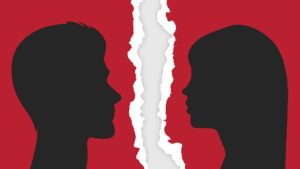
“I Am 17 and I Don’t Know Where to Go with My Life”
I frequently get requests from my readers asking for advice, and I do my best to answer their questions and get them pointed in the right direction. Sometimes, much to my surprise, the requests come from young people who have read my books. For example, this one from JC, who wrote after reading Ready, Fire, Aim:
“I am 17 and I don’t know where to go with my life. I was thinking about going into sales because I want to learn a skill. Since you are an expert, I wanted to know what your insight would be. Any help would be appreciated.”
This is what I told him…
The best thing you have going for you, JC, is that you are only 17 and you’ve already proven your ambition by taking the initiative to write to me. In my opinion, ambition + proactivity = 50% of success. So, you already have half of what you need to achieve your business and financial goals.
The other half is a combination of knowledge and skill.
By knowledge, I mean discovering the key elements that undergird all entrepreneurial businesses, which is exactly what Ready, Fire, Aim was written to explain.
And by skill, I mean the three essential skills of entrepreneurial success:
* Knowing how to sell products and services, generally and in the specific industry you work in
* Knowing how to safely and intelligently grow any entrepreneurial business
* Knowing how to create and manage healthy and sustainable profits
Smart You!
There is no bigger advantage to achieving significant goals than starting young. Not only do you have unlimited energy and perhaps the sharpest mind you will ever have, you also have decades of time. You have the time to learn the fundamental skills that will make you competent and comfortable in every situation and against every challenge you will face in the future. You have the time to decide, at any point, that the path you are on is not right. And you have the time to start over.
Lucky You!
There are many ways to become wealthy and successful. So if you begin your journey without a particular profession or business in mind, as seems to be the case with you, don’t fret about it. You have a BIG advantage over someone that wants to be, for example, a successful doctor or software technician or CEO in a particular industry. Because you haven’t locked yourself into a niche, you are free to choose a path that – depending on the skill sets you have now – will be the fastest and easiest to get you where you want to go.
What Should You Do First?
I’ve never been comfortable with the idea that goals – any goals – should be undertaken one step at a time. The moment I decided that I wanted to be financially successful, I could see that there were a half-dozen things I needed to do, and I needed to start doing all of them immediately.
Suggestion #1. At this point, you are not sure what profession or business you want to become a part of. And, as I said, that is to your advantage. Because what you must start doing immediately is learn the fundamentals of how all businesses work. Not just by reading Ready, Fire, Aim, but by treating it as a reference that you refer to daily.
Suggestion #2. Take a sales job. Any sales job. Every successful entrepreneur I know spent at least a year or two in his/her youth selling products and services directly – either by phone or door-to-door, in a retail office or on a car lot. There is nothing that will teach you how to sell anything better and faster than simply doing it. No book or manual can come close. And don’t be afraid to move around a bit from one type of sales job to another. To truly master the skill of selling, you have to have experience with soft selling (as you would be doing in a retail store) and hard selling (on the phone or door-to-door).
Suggestion #3. Once you become comfortable with your selling chops, make the move to become head of sales, either in the company you are working for or another one. Running a sales department requires essential skills that you won’t get by being one of the salespeople. Heading a sales team will teach you how to manage, monitor and, most of all, motivate salespeople. And that is an enormously important skill that you must learn if you want to get to the top of whatever industry you eventually land in.
These three suggestions will get you started. There will be other skills you will need to develop as you move closer to your ultimate goals. But for now, since you are just starting out, this will be more than enough to focus on.
Oh, and One Other Thing…
While you are working full-time at various jobs to develop your selling and sales management skills, don’t neglect your general education. If you choose not to go to college, you should nevertheless spend several hours a day taking online courses that will provide you with the knowledge and intellectual sophistication you will need in order to wisely spend the wealth you will eventually acquire.
Worth Considering
The Continuing Mystery of Ray Epps, Sr.

On Jan. 5, the man pictured above was videotaped energetically encouraging Trump supporters to storm the Capitol. The next day, in the midst of the chaos outside the Capitol building, he was videotaped asking law enforcement officers how he could help them.
This got Tucker Carlson and some other conservative commentators wondering: Who was this guy? And what the heck was he doing? Was he bipolar? Or could he be working for the Feds, provoking the crowd to enter the Capitol?
For months, they asked: Who is that mystery man? And why wasn’t he among the 1,000+ Jan. 6 protestors that were suspected of criminal activity, identified, and arrested? For months, there were no answers. And then, finally, he was named: Ray Epps, Sr., a 60-something ex-Marine who, when questioned before the now-defunct House Select Committee, said that he wasn’t a federal agent and wasn’t working for the CIA, the National Security Agency, or the Metropolitan Police Dept.
What he couldn’t explain was his strange behavior.
Since then, more than 700 Jan. 6 protesters have been charged with various crimes, with more than half of them convicted. Most of those that had done nothing more than be photographed at the scene received sentences of several months. But the sentences of some who were involved in the planning and execution of the protest were severe.
Stewart Rhodes, a Yale graduate and military veteran who was convicted of planning the protest, received 18 years in prison for “seditious conspiracy.” Peter Schwartz, who was accused of throwing a chair at a group of policemen and then pepper-spraying them, got a 14-year sentence. And Thomas Webster, a retired New York City police officer, got 10 years for tackling a DC officer and grabbing his gas mask.
The most-publicized protestor, of course, was Jacob Chansley, who wasn’t accused of assaulting law enforcement or destroying property. He was sentenced to 41 months in jail for, apparently, simply being inside the Capitol Building, shirtless and wearing a headdress.

So, what do I think about the whole Ray Epps thing?
It might be the biggest political farce of the last 10 years, and we have had plenty of those. In terms of facts and common sense, his testimony and the government’s stated position on him and his story have the intellectual solidity of gender fluidity theory.
I still have questions.
Why, after the contradictory videos of him went viral, weren’t the FBI, the CIA , and the Metropolitan police, who had thousands and thousands of images of all the protestors that day, able to identify him?
And then why, when he was identified, did it take so long for the police to charge him?
And then why, after he was arrested, did the Justice Department make a special plea to the court for how they felt he should be treated?
Could it be that they were afraid that if he got a much stiffer sentence, five or 10 years, for example, he might start talking?











